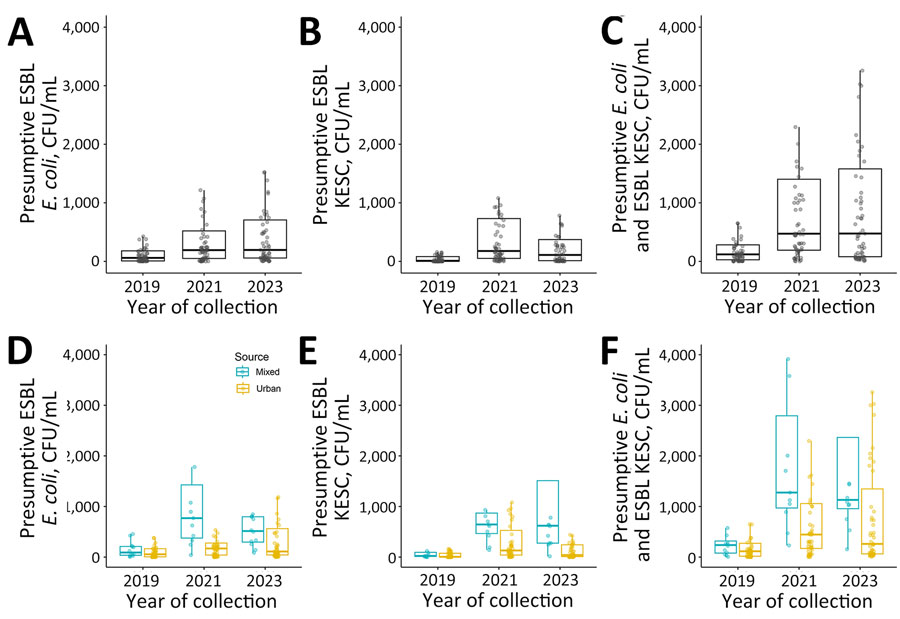Volume 31, Number 3—March 2025
Dispatch
Extended-Spectrum β-Lactamase–Producing Enterobacterales in Municipal Wastewater Collections, Switzerland, 2019–2023
Figure

Figure. Temporal quantification of extended-spectrum β-lactamase–producing Enterobacterales in municipal wastewater collections, Switzerland, 2019–2023. A–C) Temporal distribution of presumptive ESBL-producing Escherichia coli (A), presumptive ESBL-producing KESC (B), and presumptive ESBL-producing E. coli plus KESC (C). Data from the 3-month sampling across the 21 sampling points distributed across Basel, Switzerland (representing 44% of the Basel population), are collapsed and represented by year: 2019, n = 63; 2021, n = 62; 2023, n = 63. Friedman test p values for all categories are <0.001. Quantification stratified by sample source. D–F) Temporal distribution by source, urban or mixed (community and hospital) effluents, of presumptive ESBL-producing E. coli (D) presumptive ESBL-producing KESC (E), and presumptive ESBL-producing E. coli plus KESC (F). Data from the 3-month sampling across the 17 urban (n = 51 per year) and 4 mixed (n = 12 per year, except for 1 data point missing in April 2021) sampling points are combined and represented per year. Box tops and bottoms indicate interquartile ranges; bold lines, medians; whiskers, 1.5 times the interquartile range. Jitter plots indicate individual data points. Outliers were removed for readability. Mann-Whitney sum U test p values stratified by mixed versus urban samples per chromogenic group (per year): E. coli, p = 0.654 (2019), 0.107 (2021), 0.371 (2023); KESC: 0.420 (2019), 0.179 (2021), 0.0251 (2023); E. coli plus KESC, p = 0.531 (2019), 0.283 (2021), 0.128 (2023). ESBL extended-spectrum β-lactamase; ESBL-PE, extended-spectrum β-lactamase–producing Enterobacterales; KESC, Klebsiella, Enterobacter, Serratia, and Citrobacter.
1These first authors contributed equally to this article.
2These senior authors contributed equally to this article.